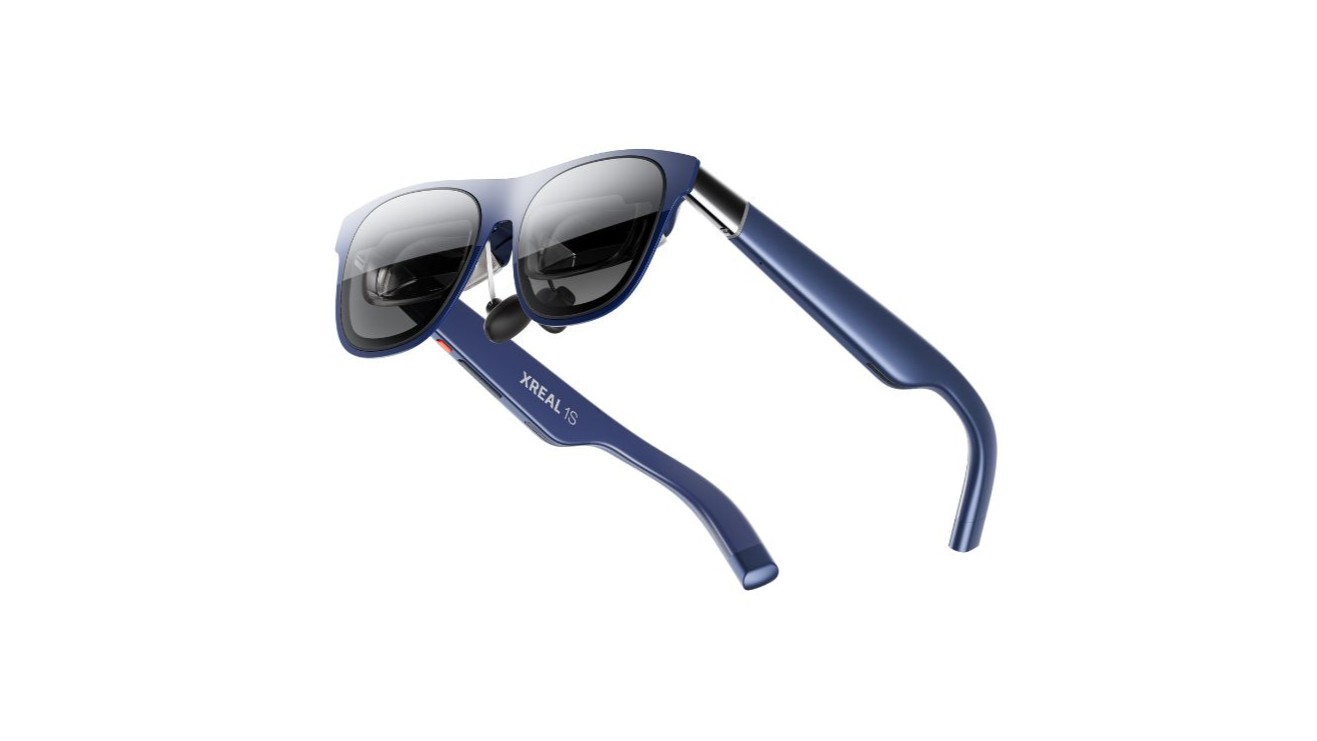The COROS NOMAD has impressed me as a more fun Garmin Instinct 3 rival
COROS's new NOMAD outdoor watch is designed to survive epic hikes and let you commemorate your experience with voice pins.

COROS has launched a new outdoor fitness watch for hikers and campers with dual-band GPS, 22-day battery life, and offline maps. Having tested the COROS NOMAD out myself, I can happily say that it's an intriguing alternative to the popular Garmin Instinct 3, and better in several ways.
The NOMAD's key perk is its offline street and topographic maps, now improved with street/ trail names and points of interest in case you don't predownload a course.
Its Ambiq Apollo 510 processor makes map navigation blissfully smooth. Scroll in or out with the crown, or swipe on the touch display to look nearby, and it fills in the details in less than a second, where other fitness watches I've tested have painfully laggy maps.
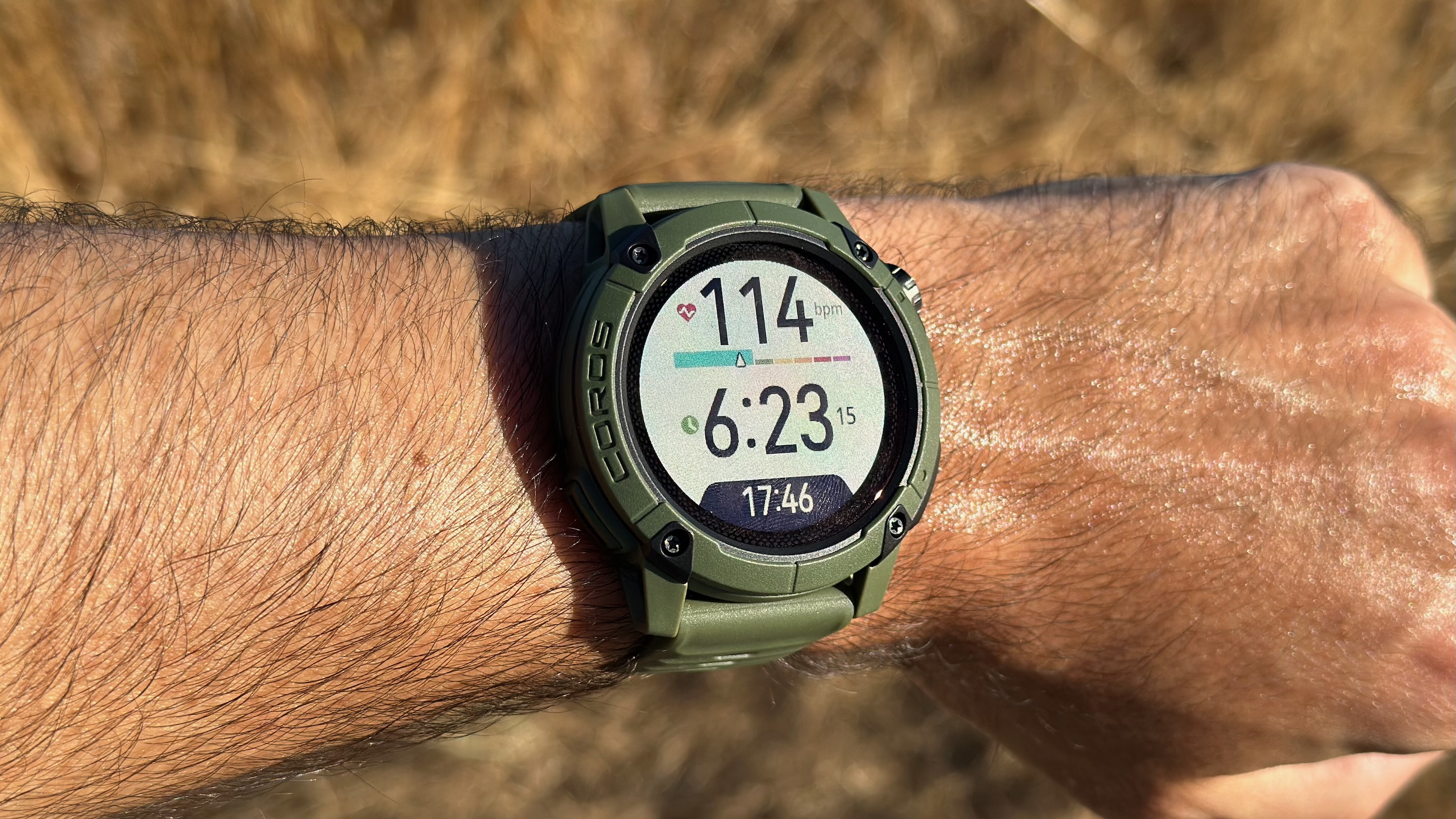
Old-school fitness watch fans will appreciate that the COROS NOMAD uses a 1.3-inch MIP display. I'm much more of an AMOLED fan, but COROS's colorful, high-contrast take on MIP is respectably readable indoors, once you turn on the gesture backlight, and it's great outdoors.
But COROS also made the NOMAD feel more modern with its new voice pins. Using the dual noise-canceling mics, you can record your thoughts mid-activity and have each recording pinned to a specific GPS location. It turns your workout summary into a hike diary, with the option to add photos to specific pins and then text the summary to loved ones so they can listen and see for themselves.
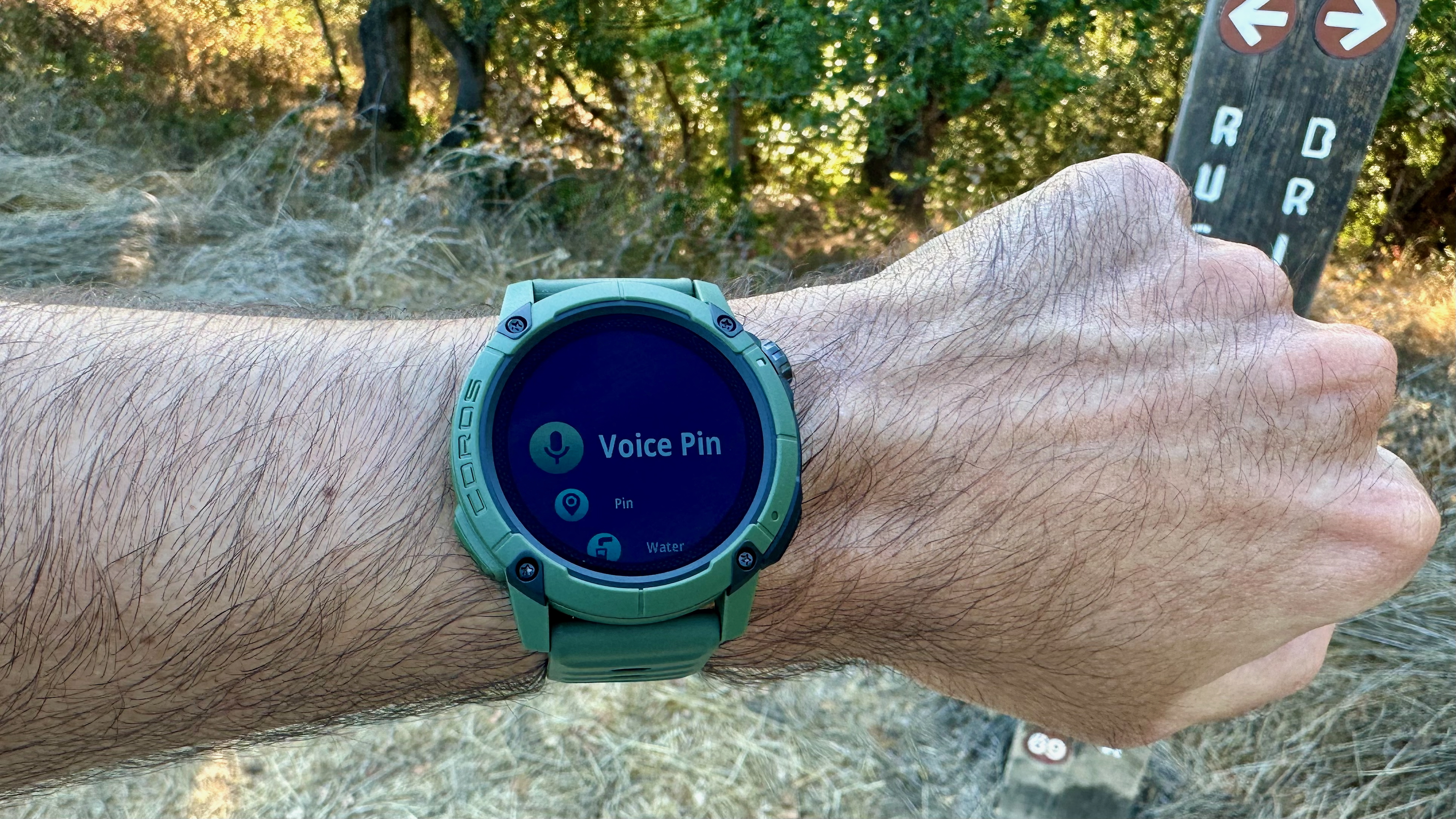

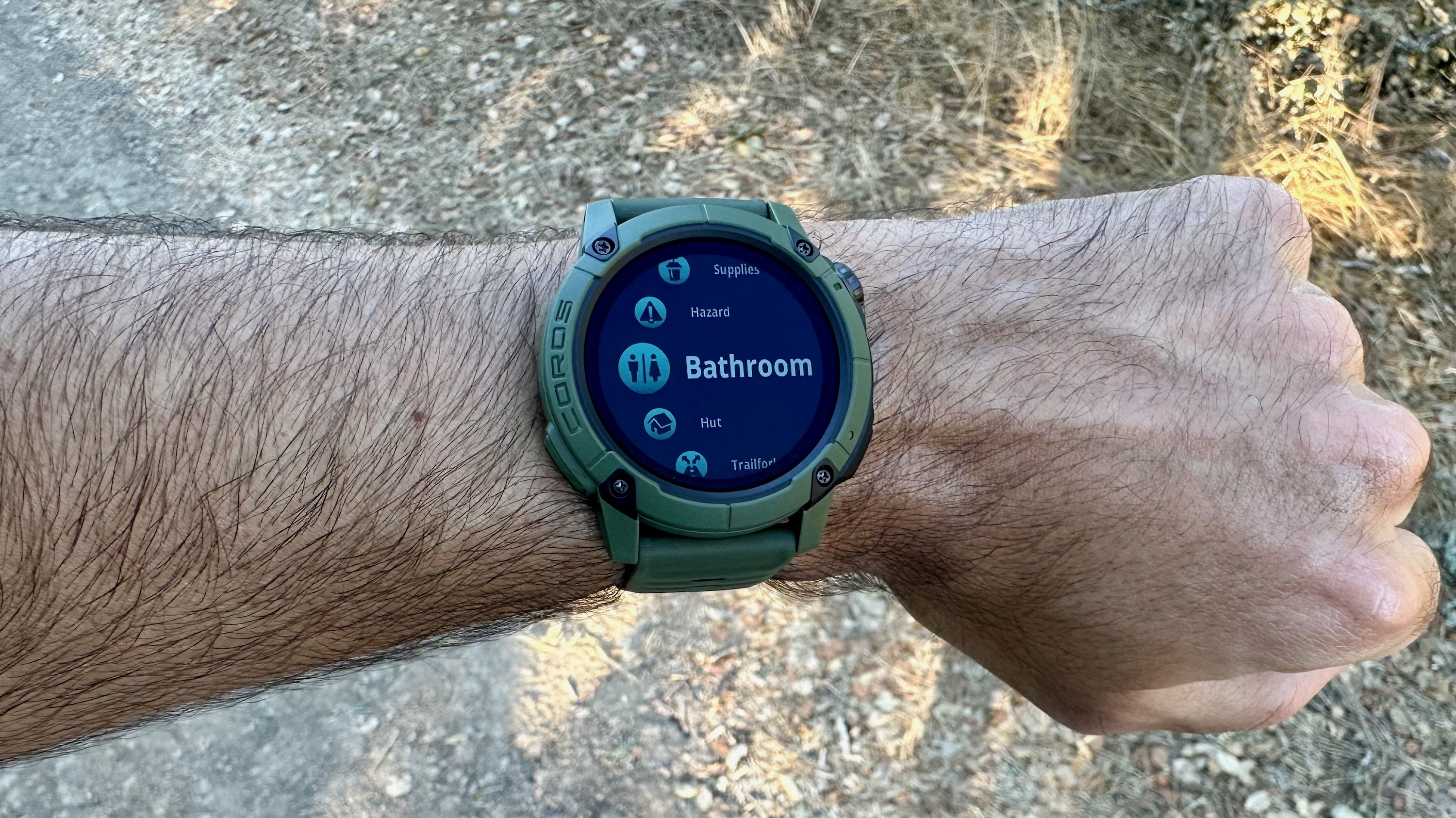
I tested it out on a local hike, and was happy with the experience. My voice came through clearly if I held the watch near my face, or muffled but audible at my hip, with pretty good noise cancellation for wind and footsteps.
COROS auto-transcribes every voice pin, and if you describe something like a tick infestation or trailfork, COROS will label that pin with a hazard or nav symbol. You can also place pins without speaking, using the same action button shortcut menu.
Get the latest news from Android Central, your trusted companion in the world of Android
Specs | Coros Nomad |
|---|---|
Dimensions | 47.8 x 47.8 x 16.4mm |
Weight | 49g (nylon) / 61g (silicone) |
Materials | High-strength polymer + aluminum |
Colors | Brown, Green, Dark Grey |
Buttons | Digital dial, back button, action key |
Protection | 5 ATM, hardened mineral glass |
Display | 1.3-inch (260x260) MIP touch |
Battery | 22 days; 50 hours (All-systems GNSS); 34 hours (dual-frequency) |
Charging | 1.5 hours |
Sensors | PPG, SpO2, altimeter, accelerometer, gyroscope, compass, temperature, ECG |
Tracking | GPS (L1 + L5), GLONASS, GALILEO, BeiDou, QZSS |
Smarts | Mic for voice pins, 32GB for music and landscape/ topo maps, weather, alarm, timer, stopwatch |
Key fitness tools | EvoLab, running fitness test, training load (recommendation), recovery timer, effort pace, training plans, workouts |
Pricing | $349 / €369 / £319 / CA$499 / AU$649 |
Voice pins aside, you can now see 3D flyover summaries of your COROS activities in the app. And more generally, COROS updated its training load widget so it no longer resets every Monday; you now get a rolling 7-day view of your training load, which is much more useful.
COROS also includes a ton of fishing activity modes, with ways to log your catches and casts, pin "promising" fish spots, and other niche tools. I've never fished myself, but it's gratifying to see COROS try to target niche audiences.
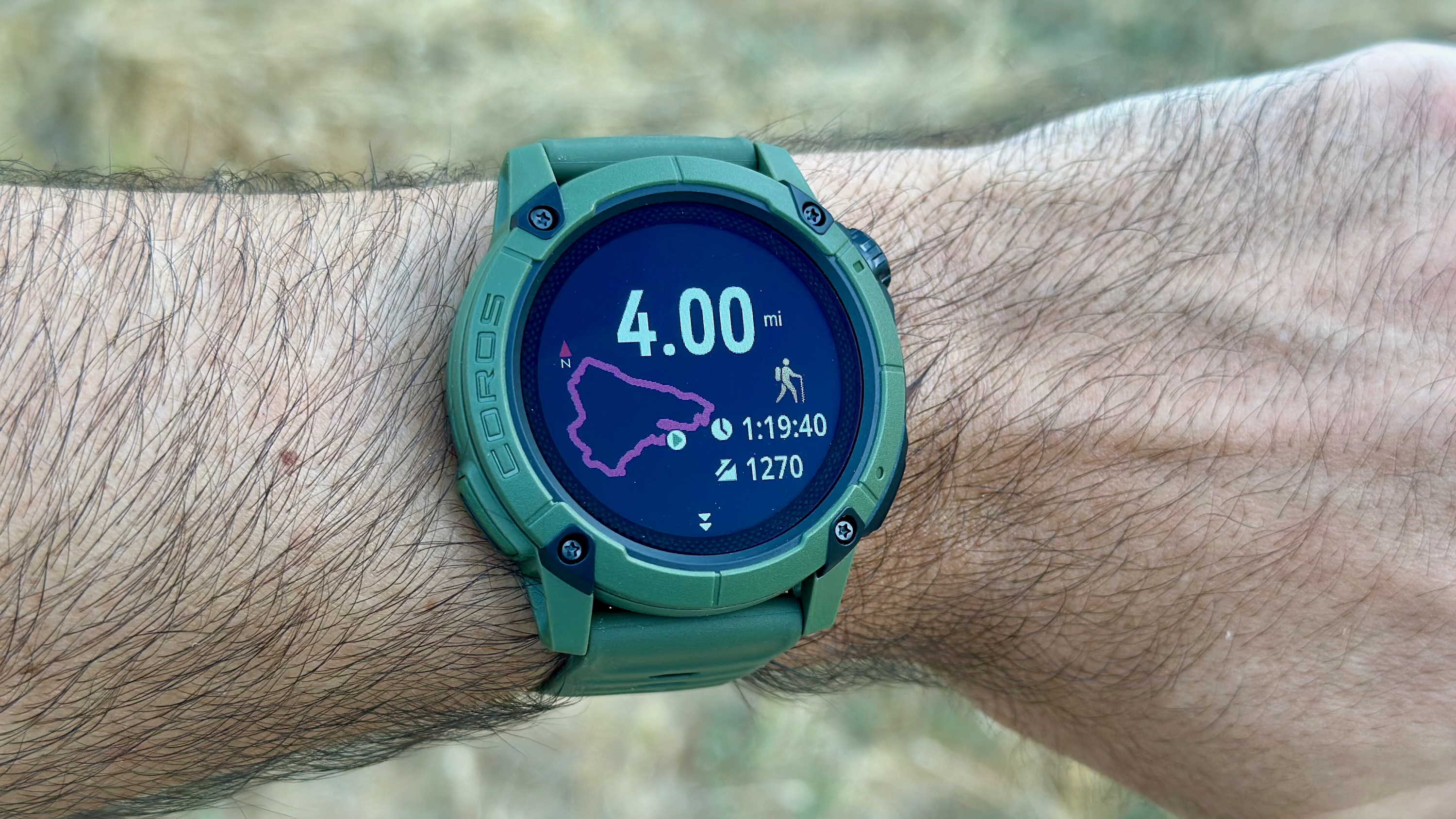
In many ways, the NOMAD is a rugged COROS PACE Pro. Both share the same $349 price tag, 30+ hours of dual-band GPS tracking, training load data, recovery time recommendations, music storage, and speedy offline map navigation.
But while the PACE Pro has to compete against a crowded market of running watches, the NOMAD has only a few rugged adventurer rivals like the Instinct 3 and Amazfit T-Rex 3.
Why the COROS NOMAD excited me more than the Garmin Instinct 3
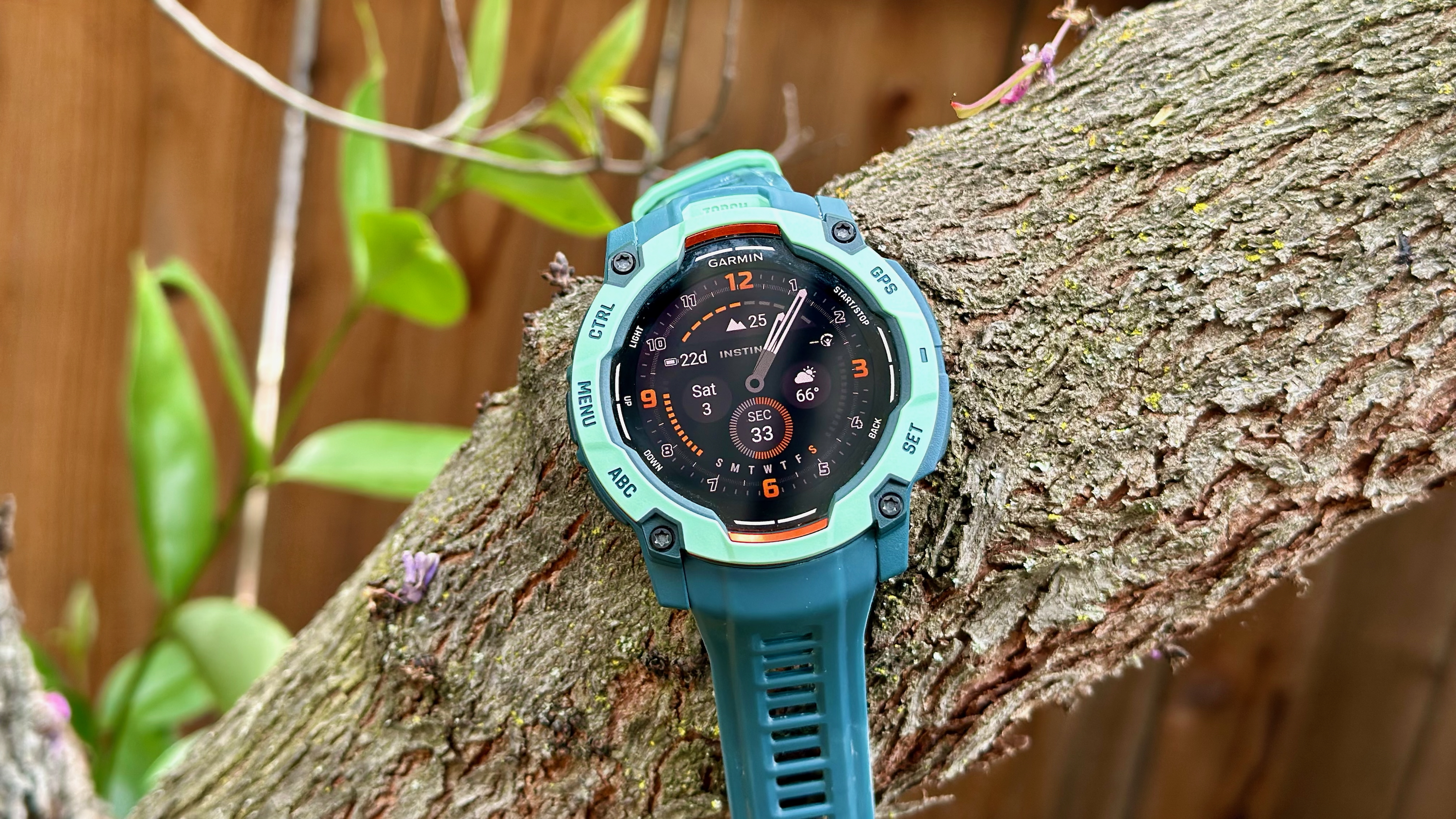
I gave the Garmin Instinct 3 a solid review score for its weeks of battery life, accurate data, and Garmin training tools. But I also complained that Garmin should have given a $450+ "adventurer's watch" offline maps and more exclusive outdoor tools, so that battery life wasn't its only trademark.
Whether you care about the NOMAD's voice pins and fishing tools or not, at least COROS made sure to differentiate it from its other lineups, and didn't price-lock maps like Garmin does. Plus, even if you buy the Fenix 8 for mapping, it has more sluggish performance, and navigating with buttons instead of a crown isn't that fun.
Of course, the Instinct 3 has plenty of upsides over the NOMAD: doubled water depth with a MIL-STD-810 rating, a built-in flashlight, daily suggested workouts, a rucking app, and contactless payments. Most importantly, Garmin offers AMOLED or solar recharging in multiple sizes, where the NOMAD only comes in one MIP variant.
So it's not to say that the COROS NOMAD is "better" than the Instinct 3. But it's $100–150 cheaper, it's a more dependable navigation aid in emergencies, it helps you preserve memories of your favorite outdoor moments, and its weeks of battery life will be enough for most without solar recharging.
Testing the COROS NOMAD's GPS and HR accuracy

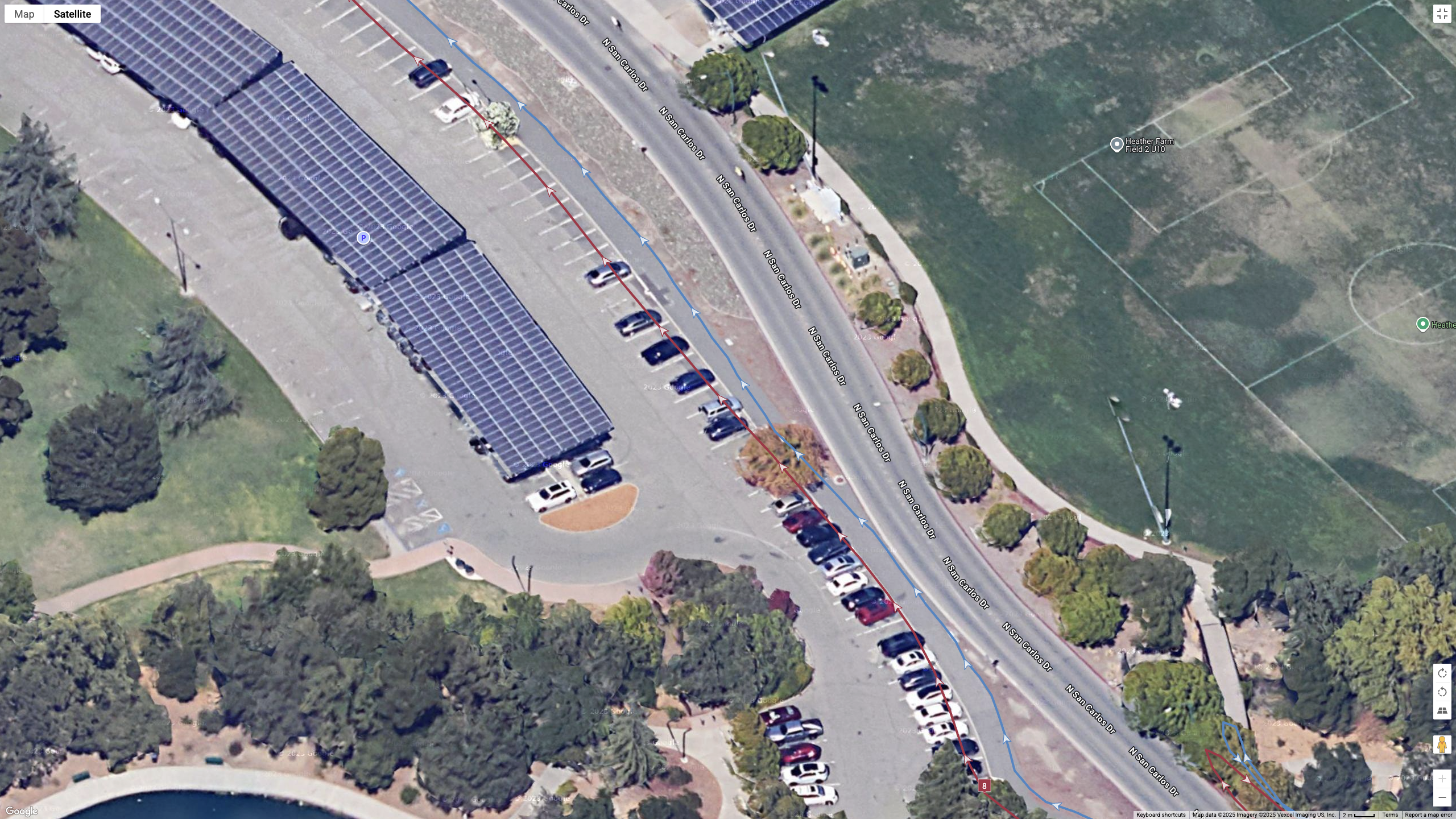
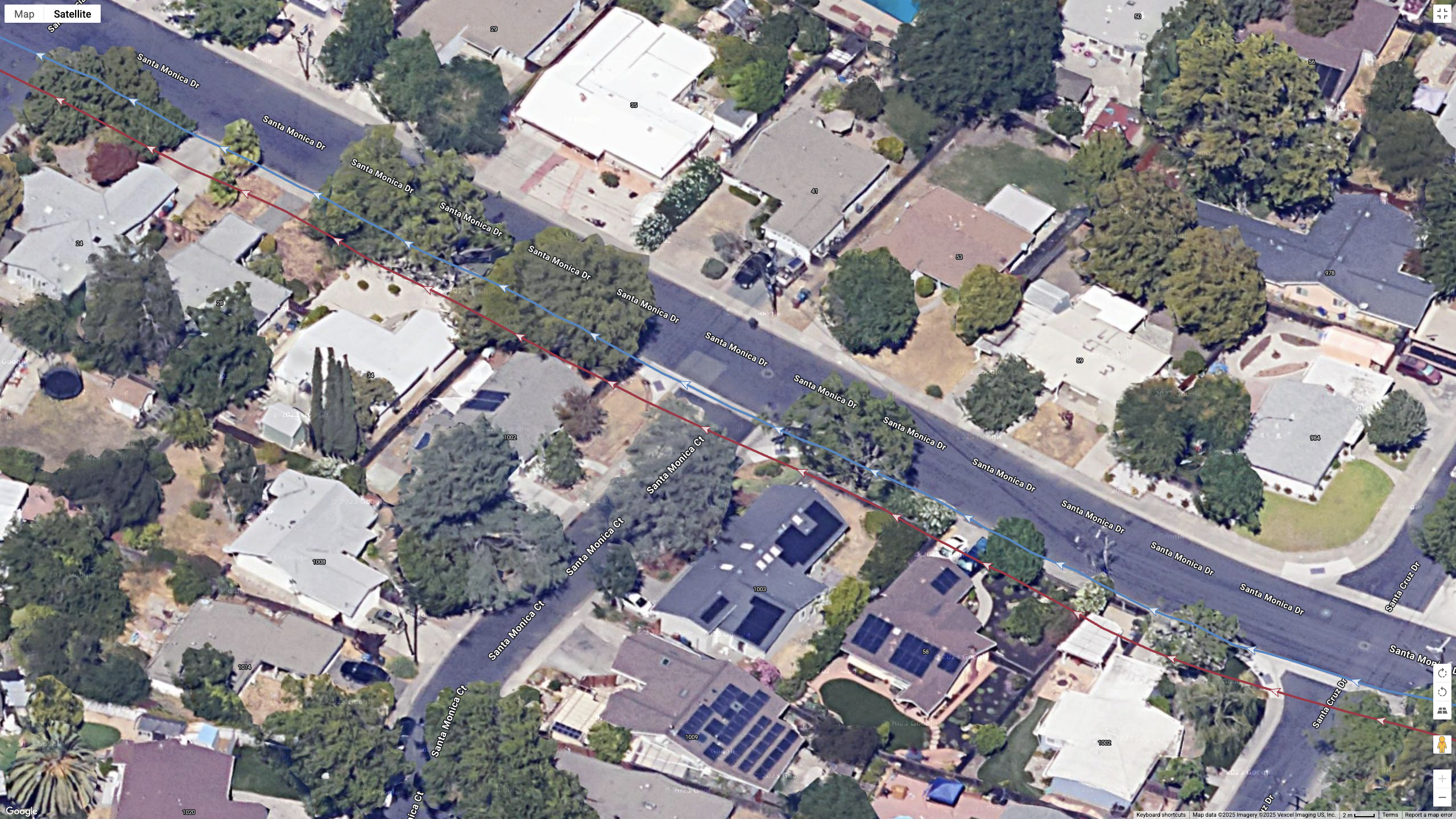

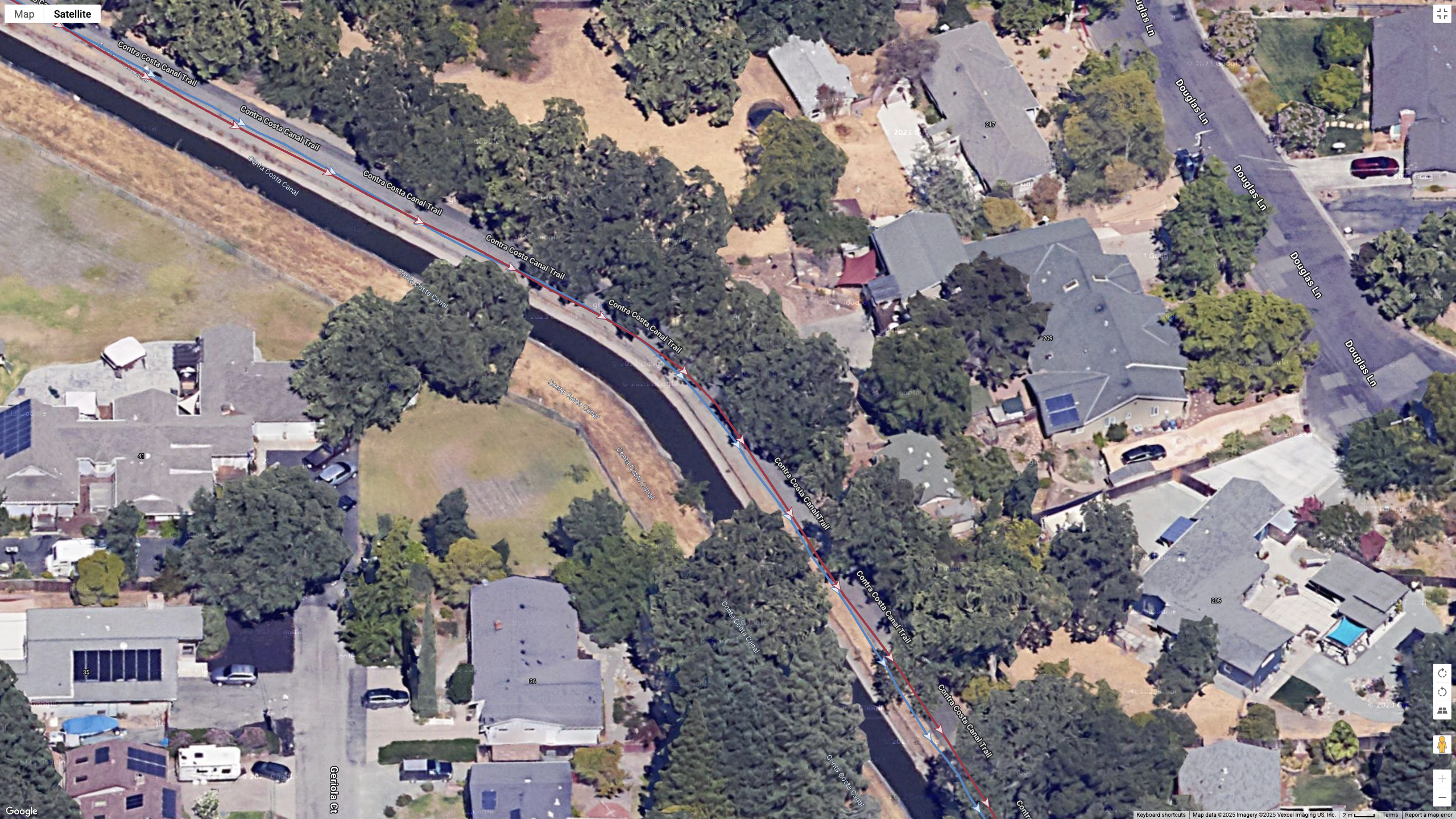
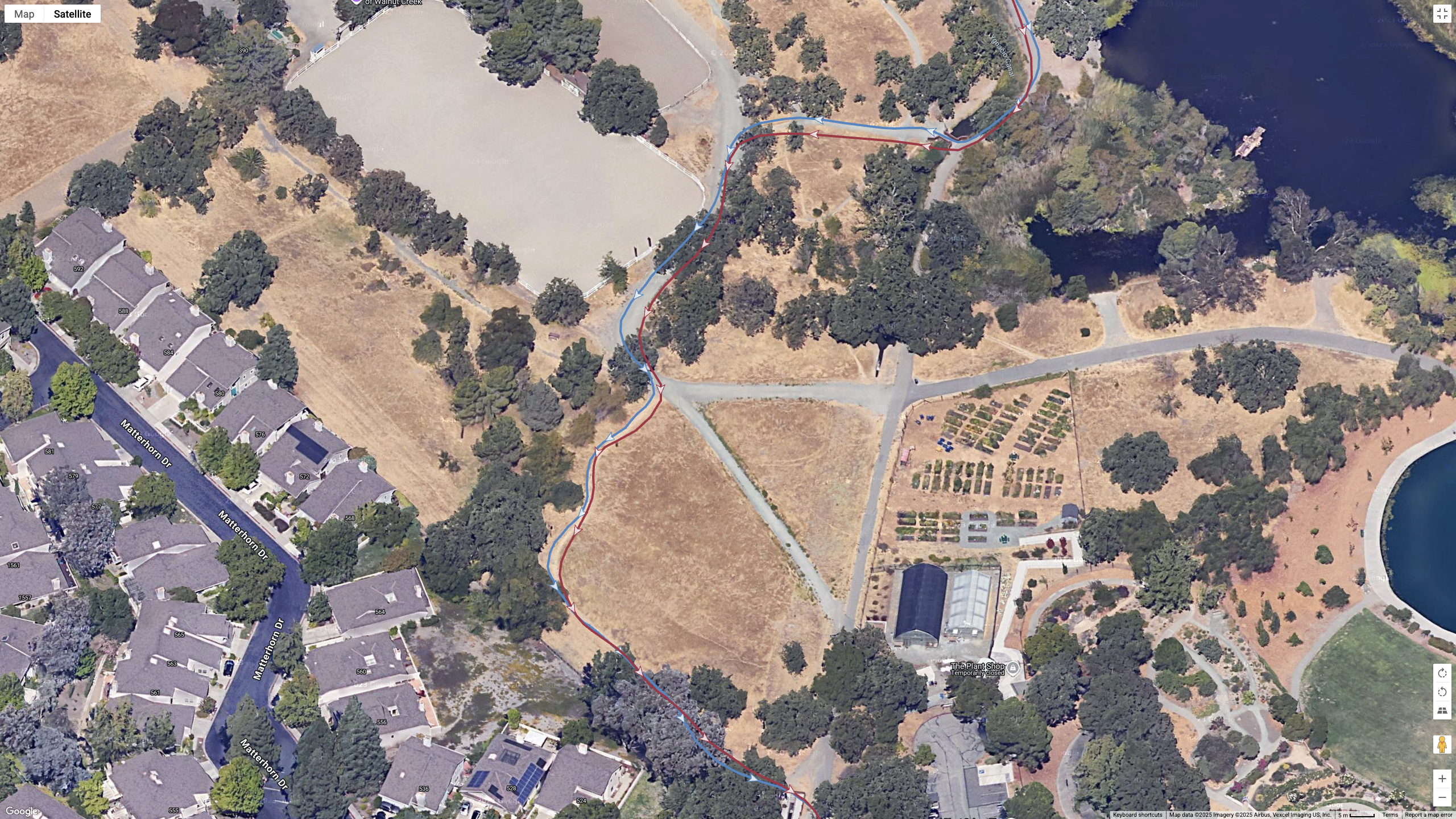
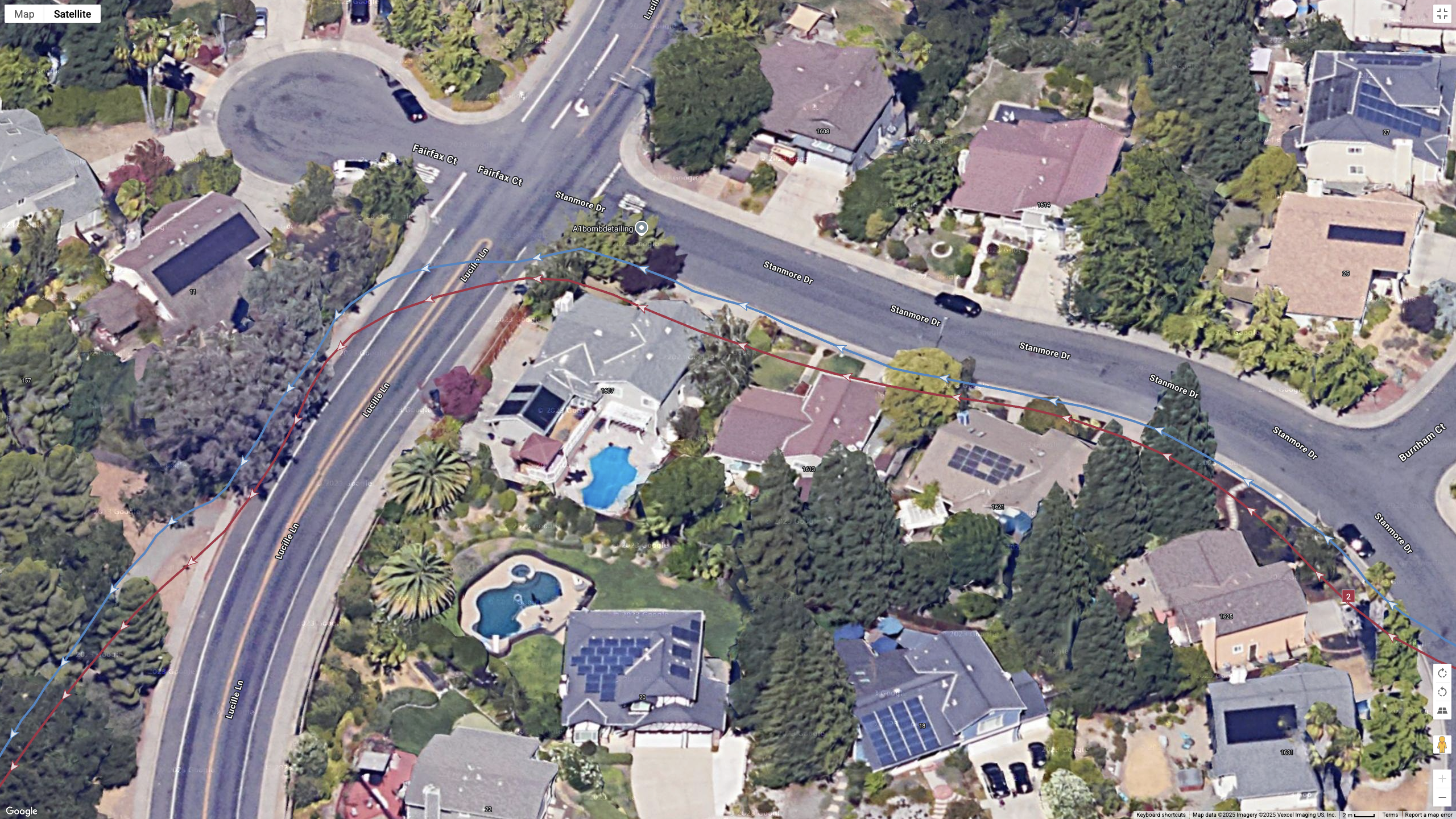
I took the COROS NOMAD out for a long run and a hike while wearing the Garmin Forerunner 970 and the Garmin HRM 200 chest strap as control groups for GPS and HR, respectively.
For the first 12-mile run, I used the NOMAD's default All-Systems GNSS mode and SatIQ mode on the Forerunner 970. COROS and Garmin ended up differing by about 50m / 0.03 miles by the end, a pretty minor discrepancy. You can see in the maps above how the NOMAD (red) sometimes drifts off course into cars or houses, but otherwise stays on the street or trail with reliable accuracy.

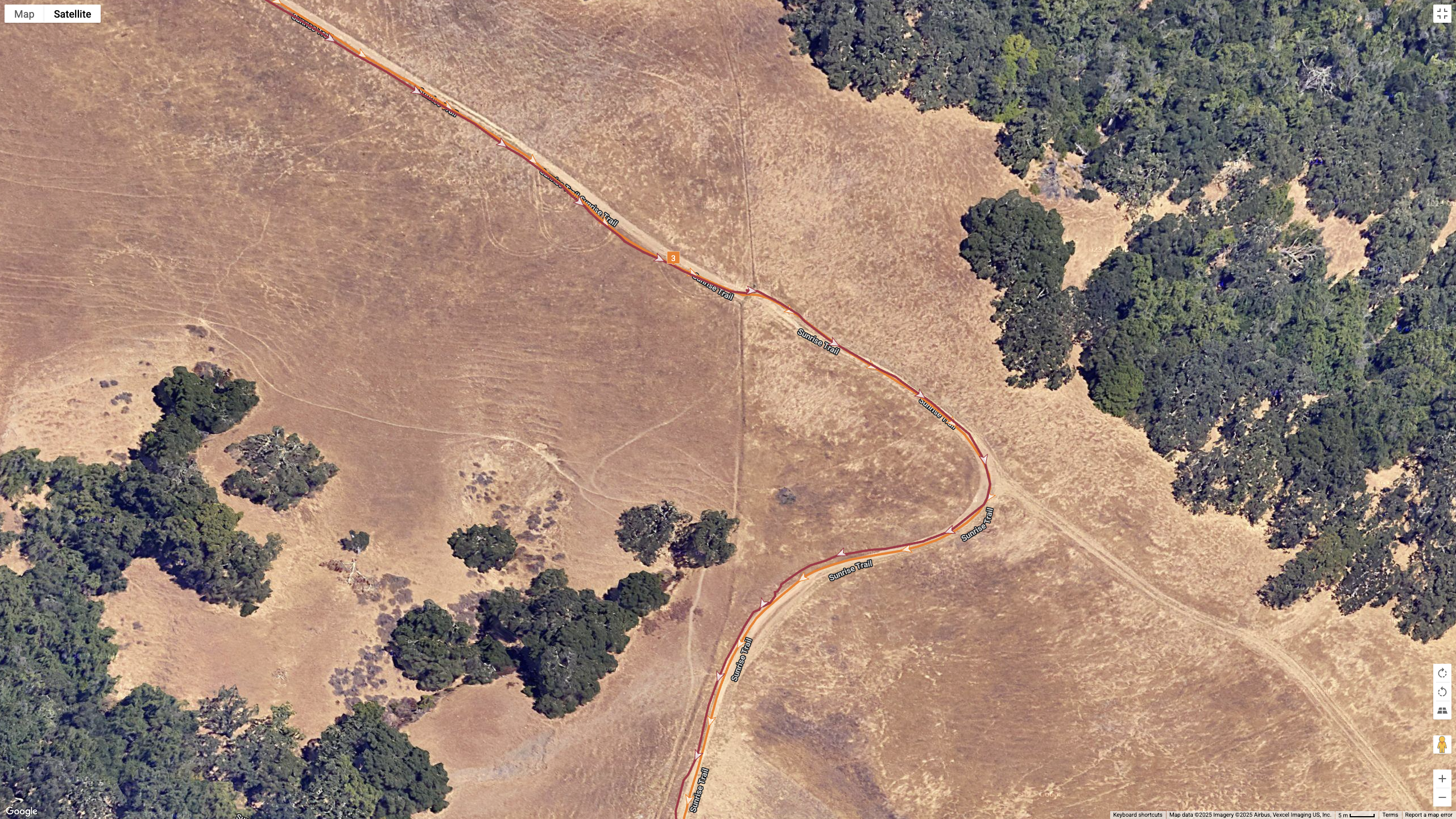


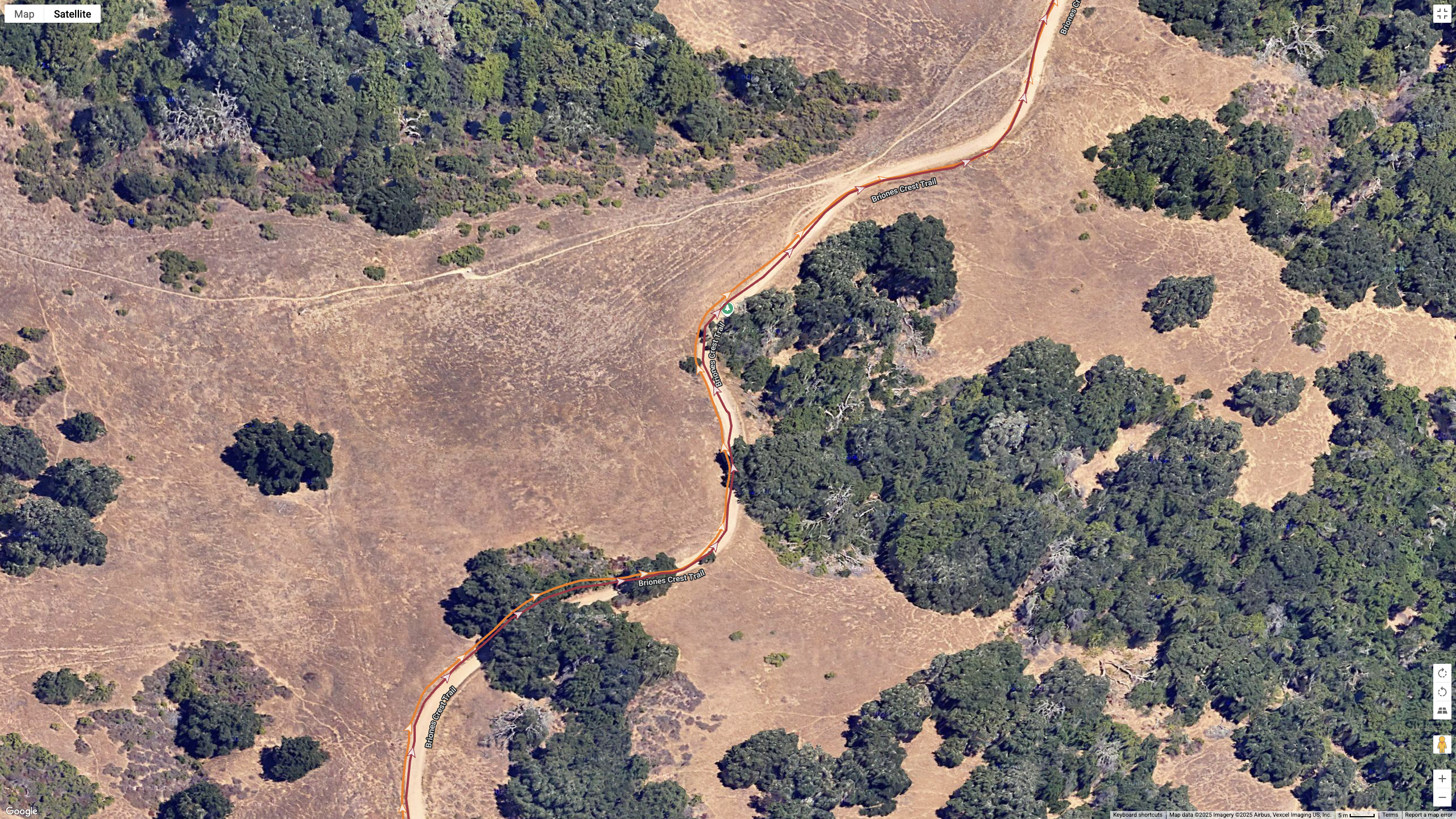
For my hike, I used dual-band GPS on both watches. Again, the gap was 0.03 miles or 50m, with the NOMAD (orange) and Forerunner (red) mostly staying in lockstep on tricky, winding trails and barely struggling with tree foliage.
The only blip was how COROS randomly warped me at the end of the hike about a mile, adding a ton of excess elevation. I have no idea how it happened, and haven't replicated the glitch since, but at least it didn't seem to affect my distance data.
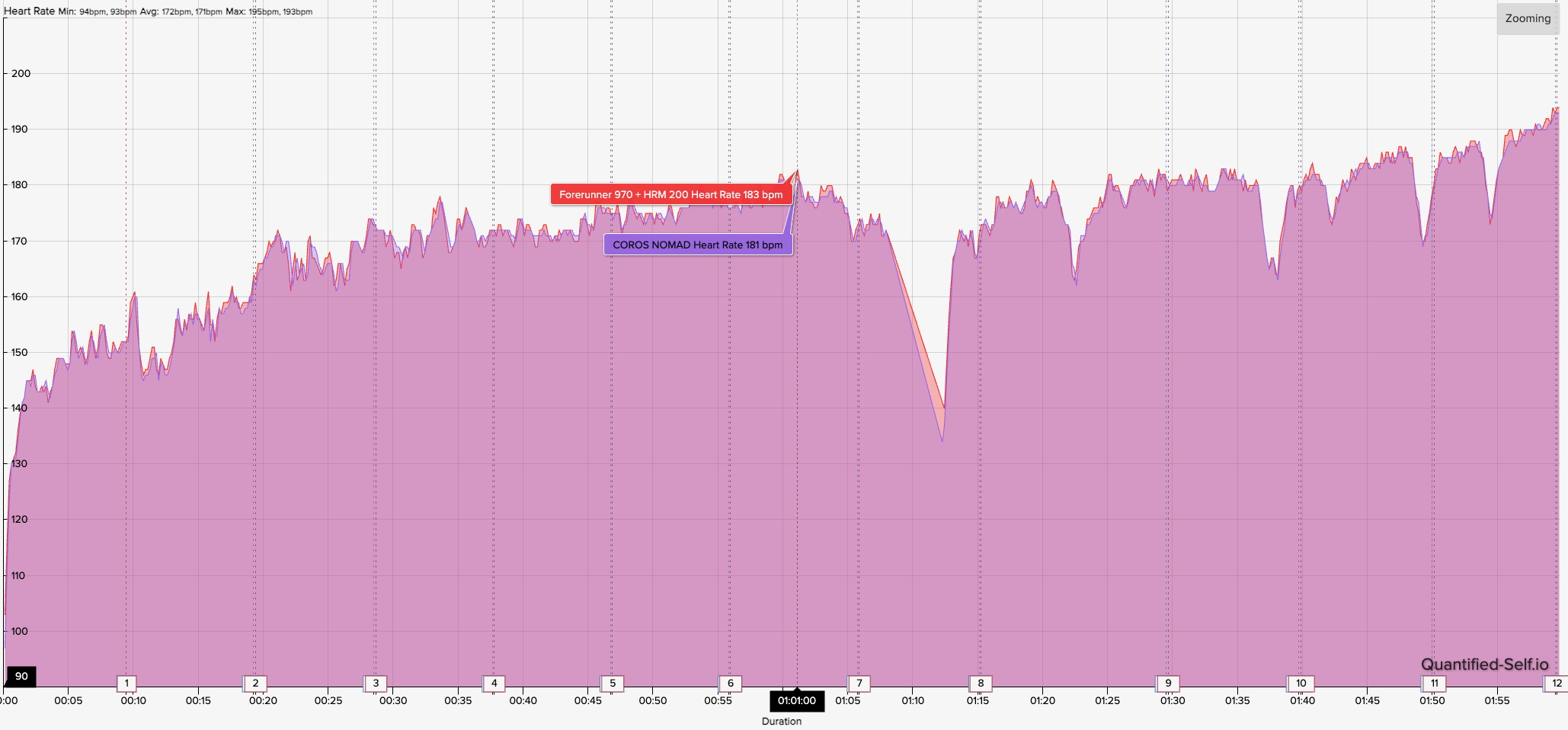
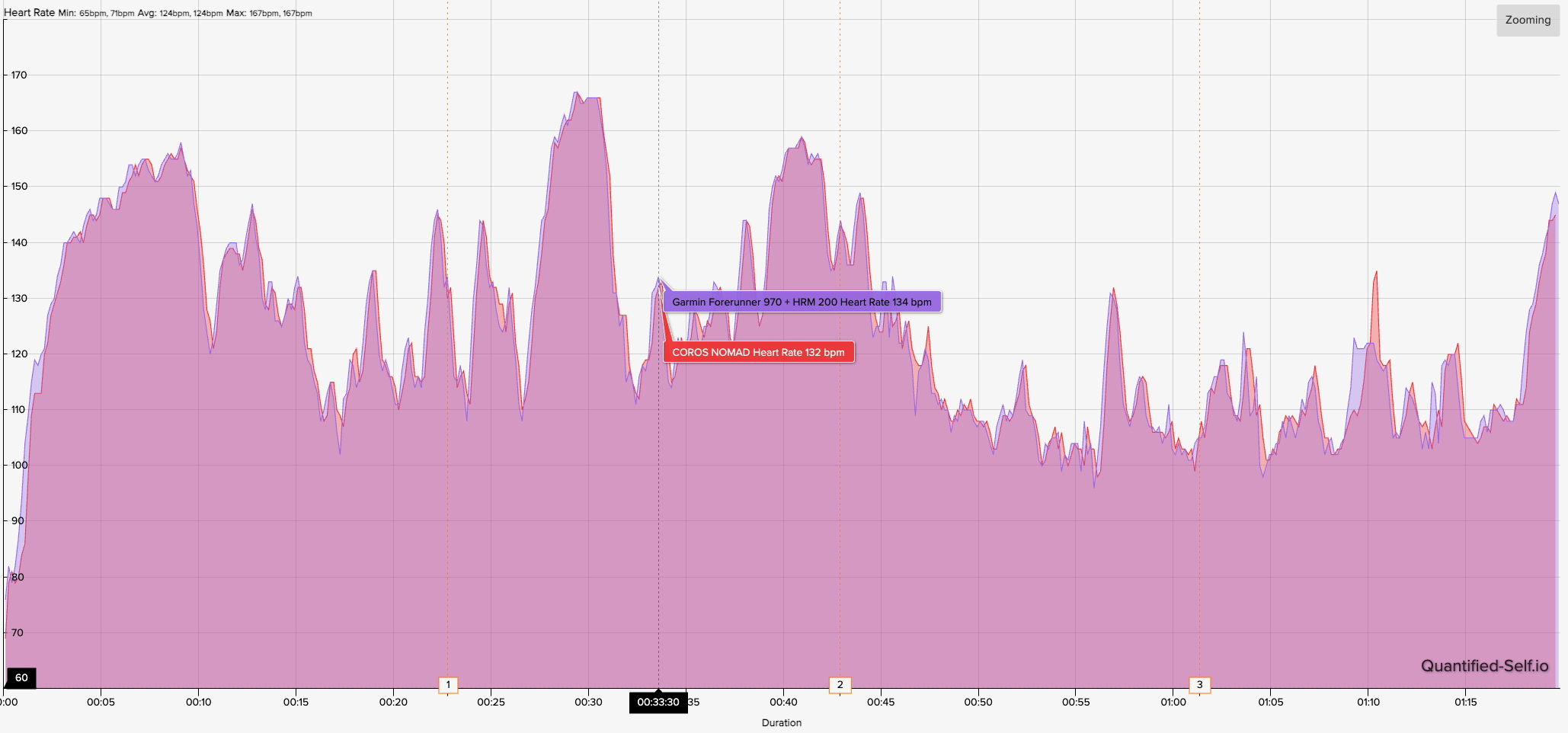
As for heart rate, the COROS NOMAD matched my chest strap's HR average and max for the hike, but fell 1 bpm and 2 bpm short for average and max during that hard 12-mile run, respectively. Most optical wrist-based sensors struggle with anaerobic heart rates, but COROS's gap is smaller than most brands; serious runners may insist on wearing a chest strap, but everyone else should be satisfied.
Overall, I think COROS NOMAD buyers should be quite happy with its accuracy. It launches today, August 18, on COROS's website, and should come to retailers like Amazon and REI later in the month.

Michael is Android Central's resident expert on wearables and fitness. Before joining Android Central, he freelanced for years at Techradar, Wareable, Windows Central, and Digital Trends. Channeling his love of running, he established himself as an expert on fitness watches, testing and reviewing models from Garmin, Fitbit, Samsung, Apple, COROS, Polar, Amazfit, Suunto, and more.
You must confirm your public display name before commenting
Please logout and then login again, you will then be prompted to enter your display name.
